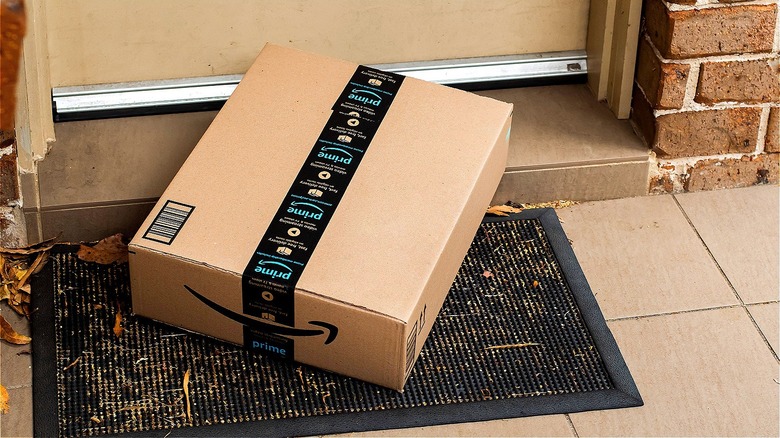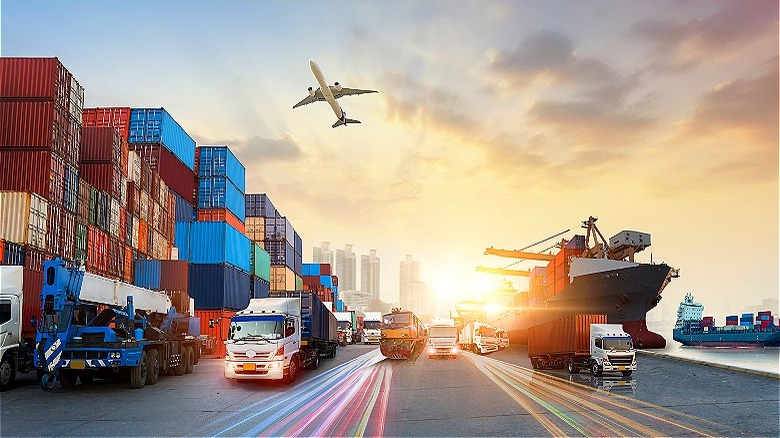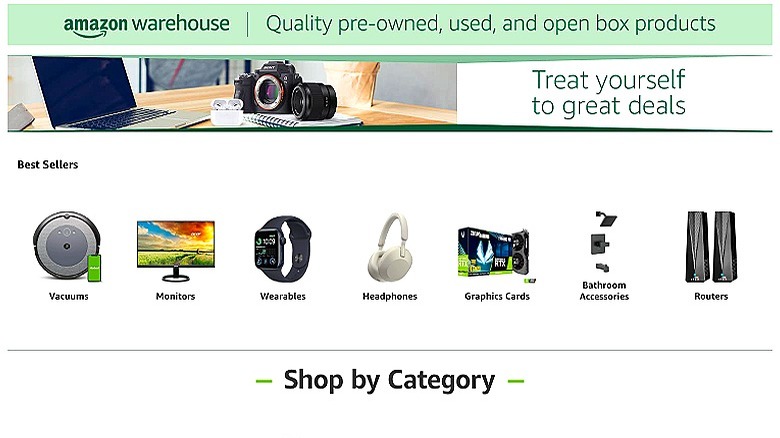What Really Happens To Your Amazon Returns?
Without a doubt, one of the factors that has catapulted Amazon near the top of the list of the largest United States retailers — second only to Walmart — is the company's return policy. Even if you're not an Amazon Prime member (and, thus, may know whether or not Amazon Prime is actually worth the subscription cost), the retailer makes it incredibly simple for consumers to send back an online order. Though policies vary, many Amazon purchases qualify for free return shipping back to the online retail juggernaut.
However, in-person returns are also a popular option because you may already find yourself at a business that accepts Amazon returns as well. Also, returns made at drop-off points don't require any external packaging like shipping boxes, nor the need to print and affix a shipping label. You can just hand over your returned item in its manufacturer's packaging and it'll be consolidated with other items for the trip back to an Amazon return center.
Venues include Whole Foods Market, Kohl's, Staples, and the UPS Store. According to its own record-keeping, approximately 80% of Amazon's online customers have a drop-off point for free returns located within a five mile radius of their homes. With this said, whether shipped back to Amazon directly or returned to a retail partner that accepts returns, consumers might assume their like-new returned item will go back on the virtual shelf to be sold again, but that's not always the case — not by a long shot.
The merchandise might not be worth getting back
Perhaps most surprising is that as recently as 2021, an estimated one-third of all Amazon returns were thrown away by third-party sellers (via CNBC). This practice is not only both morally and financially wasteful, but it contributes almost 6 billion pounds of waste to landfills each year. Hence, it's no surprise that Amazon has been heavily criticized for its disposition of returned items. In response, the retail giant says that it's now working toward a goal of zero disposal of products.
In spite of this improved philosophy against discarding items, very, very few items are able to be resold as new, even if they're unused. The reason being is that the packaging needs to be in pristine condition, without any creases, wear, or broken seals. More typically, and assuming the item is from a third-party seller, not Amazon itself, a seller will be presented with several options. First, sellers can pay to have the items returned to them, then examined, and if found acceptable, repackaged in fresh retail garb to be resold as new.
However, the process of recalling returned inventory is an expensive one, particularly if overseas transport is required. Oftentimes, the cost to recall merchandise isn't justifiable when compared to the cost to manufacture additional units instead.
Some entrepreneurs make a living from Amazon returns
When a third-party seller on Amazon doesn't want their returned Amazon merchandise back, that brings us to the struggle over proper disposal. With the aforementioned goal of zero product disposal in mind, Amazon seeks to resell (though not as new), donate, or recycle the returned item. Failing that, merchandise undergoes "energy recovery," which is a fancy way of saying that it gets burned. That's right, according to the Environmental Protection Agency, "Energy recovery from waste is the conversion of non-recyclable waste materials into usable heat, electricity, or fuel through a variety of processes, including combustion, gasification, pyrolization, anaerobic digestion and landfill gas recovery."
However, let's circle back to the resale option for a moment. If suppliers don't want their Amazon merchandise returned, Amazon will possibly offer a liquidation alternative rather than going straight to destroying. Companies like Liquidation.com and B-Stock Solutions sell returned Amazon items — frequently grouped together by product type — by the box, pallet, or even truckload. Entrepreneurs can purchase Amazon returns in bulk — either as a full-time endeavor or a profitable side gig — then resell the items online at a potential profit on websites like eBay and Facebook Marketplace, though this business isn't without its pitfalls. Returned items may be broken, damaged, or worth very little.
So, what's the benefit of liquidation to the original vendor? They'll recover about 5% of the original sale price if their returned merchandise is successfully liquidated, along with the warm, fuzzy feeling that it's finding a new home rather than going to waste.
Non-bulk buyers can score deals on Amazon returns, too
As an Amazon shopper, if you're looking to buy so-called open-box, scratch and dent, or other returned merchandise in smaller quantities than, say, a pallet or truckload, Amazon also sells these goods directly through various channels like Amazon Warehouse Deals, Amazon Renewed, and Amazon Outlet. Shoppers can filter their searches to seek out this type of merchandise or otherwise, the option to purchase Warehouse items may appear below or in the right margin when viewing brand-new versions of the same product.
By seeking out open-box, yet otherwise like new, items that have been returned by other Amazon customers, savvy shoppers won't only score significant savings, but they can also feel good about creating less waste in the world. Just be careful not to succumb to one of the sneaky ways Amazon can trick you into spending more money or else your bargain hunting could be rapidly derailed.


